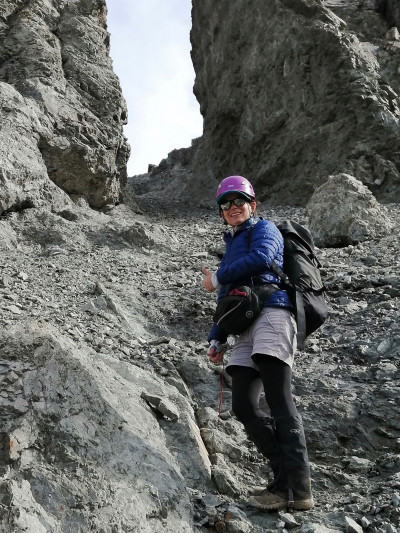Greywacke rock research unlocks secrets of earthquake faults

Ground-breaking research into New Zealand’s most common rock type is unlocking some of the secrets of many faults running underneath this country.
Faults in greywacke rocks have caused incredible havoc in Christchurch, Kaikoura and Edgecumbe in recent years and are the most common type in the country, yet the ‘ugly duckling’ of New Zealand geology has never been studied.
“Scientists have neglected greywacke because it is not colourful and rather tortured. It’s in that awkward in-between stage – between rather simple sedimentary rocks and the shiny schist that blankets Otago” says Dr Carolyn Boulton, from Te Herenga Waka - Victoria University of Wellington, who is passionate about correcting this gap in knowledge.
EQC-funding has enabled Dr Boulton to look specifically at how greywacke rocks behave before, during and after earthquakes and how faults can communicate with each other.
The research team performed a comprehensive set of laboratory experiments on greywacke rocks in machines that can create tiny earthquakes by simulating the high temperatures and pressures that exist where earthquakes begin.
This included testing greywacke samples at Utrecht University in the Netherlands, which has a sophisticated apparatus that can measure the frictional properties of the rock at high temperatures and pressure.
“With these experiments, we can quantify the properties of a fault. Because there are all kinds of faults, these experiments allow us to properly describe each fault and distinguish them from each other, like different types of cars or bicycles. Not all faults are the same,” says Dr Boulton.
The researchers then combined the laboratory data with a catalogue of real earthquakes around Wellington and built a physics-based model to calculate the temperatures underneath Wellington, allowing them to determine where seismic events are most likely to occur – and why.
“Wellington is a very good place to look at how, why, and where earthquakes occur, because the region has a very uniform rock type [greywacke]. We also have densely-spaced seismometer stations, giving us high resolution data on where the earthquakes are happening,” says Dr Boulton.
EQC Research Manager Dr Natalie Balfour says the project will deliver essential modelling data to understand the likelihood and severity of earthquakes in New Zealand.
“The results provide essential input data to build a simulated fault network to explain how faults interact and why New Zealand has multi-fault earthquakes,” says Dr Balfour.
Results will also be used to help in hazard modelling and help inform New Zealand’s building standards. Scientists, engineers and others work together to generate a better understanding of New Zealand’s insurance risk and reduce the impact of future seismic events.
Dr Boulton says that “to build a detailed model of how, why, and where earthquakes happen across the whole country, we must keep working to improve our picture of how conditions vary kilometres beneath our feet – on faults that we can never visit but still affect us.